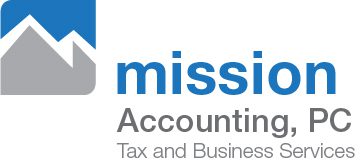As a nonprofit organization moves past the startup phase, cash flow begins to stabilize and Net Assets continue to grow, it’s important to keep an eye toward the future. Click Here to learn of some standard tools that can help guide a successfully maturing nonprofit organization.
Financial Policies and Procedures (Internal Controls)
As organizations grow and the number and volume of financial transactions increase, internal controls and financial polices also need to grow. A Financial Policy and Procedure manual spells out all the required steps and considerations of every typical transaction of the organization. having a complete fiscal policy manual, some would argue, is even more critical for a nonprofit, as they are stewards of donor assets and have been entrusted with safeguarding these assets and funds. Strong internal controls are also a way to increase donation potential and assure potential donors that their contributions will be used efficiently for the Institute’s exempt purpose. Also, strong Internal Controls and Policies are essential to a successful external Audit, Review, or Agreed Upon Procedure by a CPA firm, and may even alleviate the need for such services in some cases. (Unless of course your donors and/or grantors require a review or audit, and audits are required if your organization receives over a certain amount in federal funds.) Be sure to take the time to develop your fiscal policy manual, and do not hesitate to engage the services of a competent and experience CPA in this process.
Succession Planning
Executive Director Succession planning is key to a smooth transition through the inevitable change that every organization eventually experiences. It is even more critical to have a plan when you have an ED that is very effective, wear’s many hats, and is obviously instrumental to the organization’s ongoing success. A good Succession Plan includes: key considerations of the process, planned succession (including the search process, review and revisions of job qualifications, etc.), unexpected/unplanned (due to injury or illness or other) with and without an interim ED, roles of both the Board and the ED during the Succession, and items to prepare the staff for leadership change. Sometimes, having a third party, such as your CPA, involved in the process can make it a little easier and effective.
Investment Policy
Your organization may find itself in the fortunate position of having extra funds that are not presently being spent on the Mission or are designated for a particular purpose such as a building. Beyond the little or no savings account interest that most banks currently provide, your Board may want to make its funds work a little harder for the Organization. In this case, there are bound to be different opinions and so it’s a good idea to have a simple and straightforward investment policy that outlines how much cash should be on hand, how the extra duns will be invested (CD’s, Treasury bills, bonds, mutual funds, individual stocks) and what the overall risk level and goals (growth or principle preservation) are for the Organization’s investments.
In addition, even if your organization already has a loyal donor base and enjoys successful fundraisers, Endowment Funds are a way to attract additional donors and/or a new level of donors. They also are a way to build organizational sustainability and unrestricted revenue for years to come. An Endowment fund is administered by a third party nonprofit investment organization. Typically, the principle amounts of donor funds are not available for operations, only the investment revenue is able to be used for current operations. If this restriction is too limiting for your Board, consider a Board designated quasi Endowment Fund. Ownership and control of these funds is retained by the nonprofit, while still realizing many of the regular benefits of a traditional endowment fund. Some Endowments work differently and there are many other considerations including past fund performance, fees, and the various incentives (matching funds, etc.), so be sure to fully explore this option before making a move.
